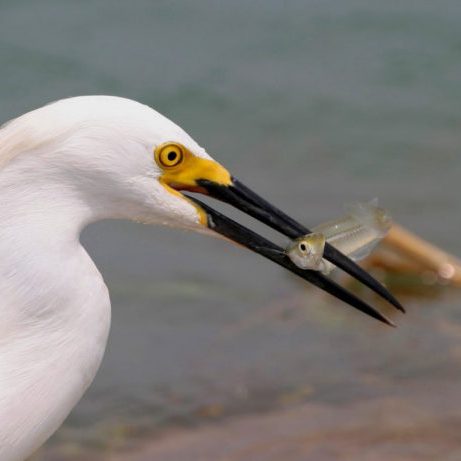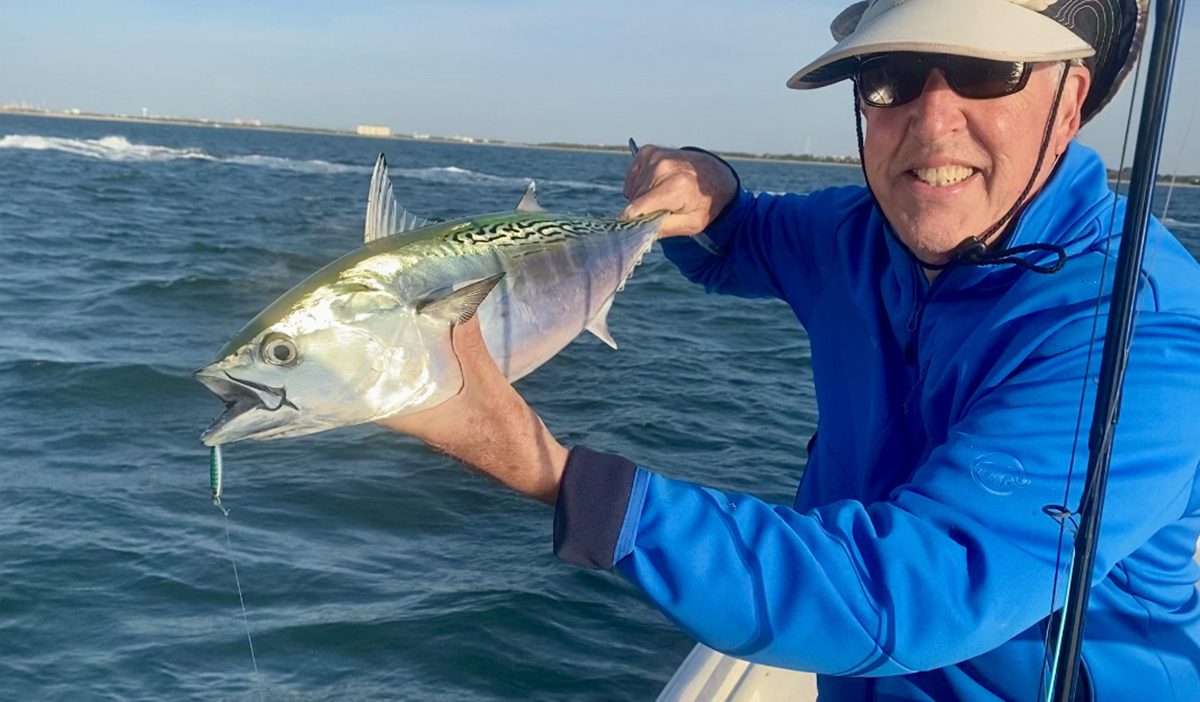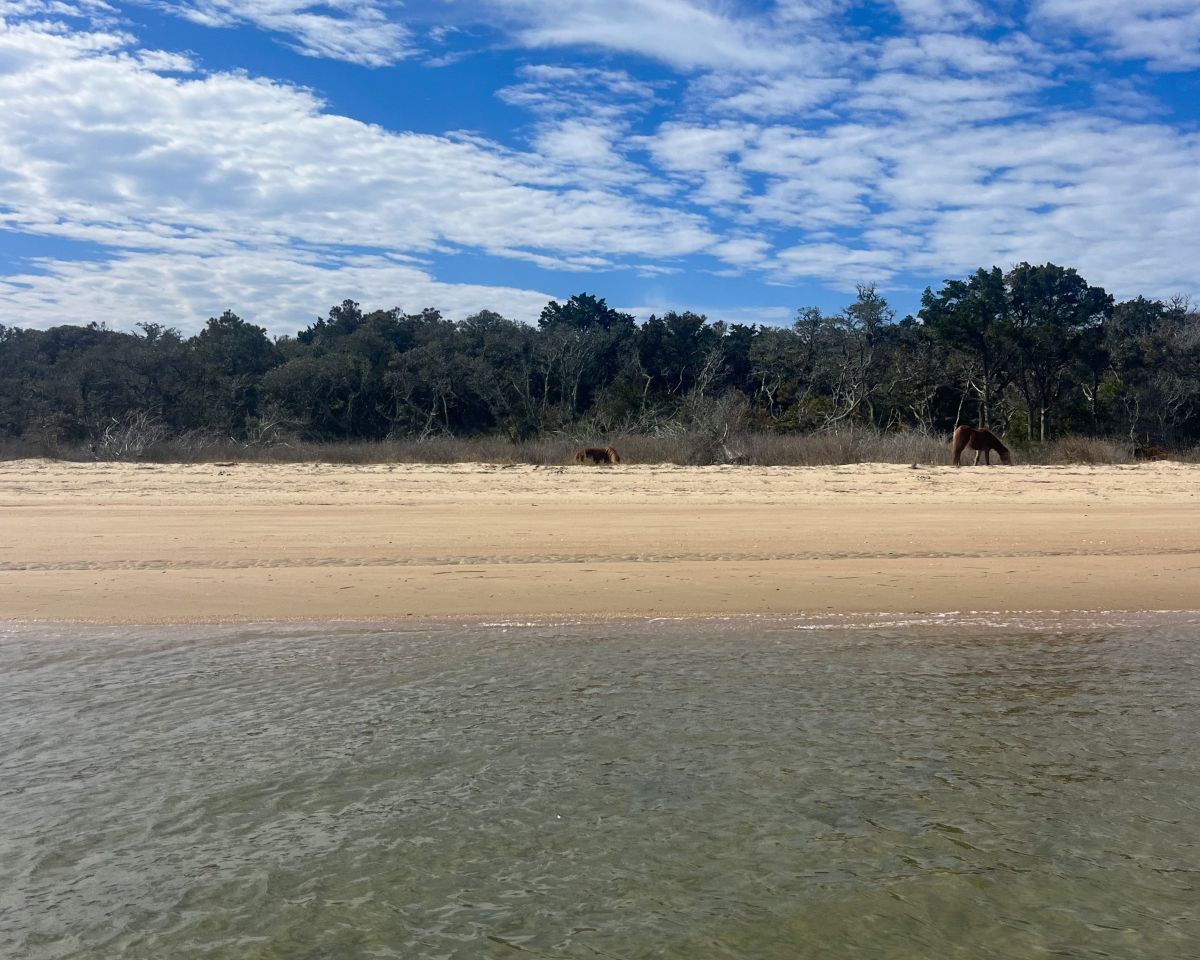SUPPLY — Beneath an airy canopy of tall, slender longleaf pines, eye-catching pops of bright colors – yellow, red, pink and purple – bloom from orchids and pitcher plants.
Among a sea of lush, green bracken fern and wispy grass, tiny Venus flytraps – little jewels native only to select boggy areas in the Carolinas – pepper the ground.
Supporter Spotlight
The only nature trail that winds through a small portion of the Green Swamp Preserve is little more than five miles away from the steady flow of traffic traveling U.S. 17 through Brunswick County. Yet, the serenity the preserve offers seems a world away.
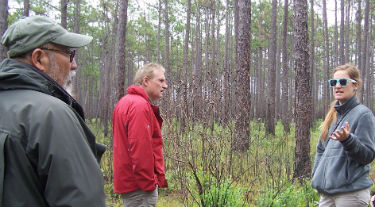
Sara Babin, right, conservation coordinator with The Nature Conservancy, talks about the varieties of carnivorous plants and orchids that grown in the Green Swamp Preserve. Photo: Trista Talton |
 Greensboro resident Valerie Nieman, left, enjoys studying the variety of plants that grow in the Green Swamp Preserve during a recent hike along the preserve’s only nature trail in Brunswick County. Photo: Trista Talton Greensboro resident Valerie Nieman, left, enjoys studying the variety of plants that grow in the Green Swamp Preserve during a recent hike along the preserve’s only nature trail in Brunswick County. Photo: Trista Talton |
During a recent guided tour compliments of The Nature Conservancy, members of the Sierra Club spent a cool Saturday morning learning about and exploring this small corner of the more than 17,000-acre preserve.
Like archeologists excavating ancient artifacts, those on the hike stopped to peer down and study the variety of carnivorous plants and orchids growing among the longleaf pine savannas dotted by a number of pocosin bogs.
“We’ve never seen these kinds of flora,” said Cheryl Ratliff. “We’ve certainly never seen carnivorous plants in the wild.”
Supporter Spotlight
She and her husband, Marshall, made the roughly 240-mile drive from their home in Reidsville north of Greensboro to hike through the preserve.
“There are a lot of plants down here that we don’t have,” Marshall Ratliff said before pointing to a wild blueberry bush rooted among a section of slash pines.
The conservancy is working on restoring this land to its natural state, planting longleaf pines that will eventually grow tall and fill in with the slash pines, said Sara Babin, conservation coordinator with the N.C. Chapter’s Southeast Coastal Plain office in Wilmington.
Short longleafs, many stretching no more than four feet tall, punctuate wiregrass throughout the savanna. These trees were planted about 10 years ago.
“It’s a long process of restoration,” Babin said.
The Green Swamp Preserve was the first land acquired by the conservancy’s North Carolina chapter when Federal Paper Board deeded more than 13,000 acres in 1977. Up to that point in history, timber on the land was heavily harvested, depleting the longleaf pine stand in the swamp.
The preserve is part of one of the state’s largest swamplands, originally covering some 140 square miles in Brunswick and Columbus counties.
A number of endangered and rare animal species, including Henslow’s sparrow, Bachman’s sparrow, Hessel’s hairstreak butterfly, American alligators and fox squirrels call the preserve home. Black bear also roam the land.The swamp is home to 14 different carnivorous plant species and 14 species of orchids, including the orange-crested orchid and white-fringed orchid.
Visitors will not find rare, federally listed endangered red-cockaded woodpeckers here today, Babin said.
These birds, which nest in the trunks of dead longleafs, can only be found in Brunswick County at Boiling Spring Lakes and Military Ocean Terminal Sunny Point areas. The conservancy is working to change that, Babin said.
“We’re looking into managing the preserve for the red-cockaded woodpecker in the next 20 years or so,” she said.
The longleaf savanna in the swamp has a unique ecosystem that relies on periodic forest fires, primarily the result of controlled burns, to burst longleaf pine cones and release seeds to bring new growth.
Blackened pine trunks dotting the landscape are evidence of the most recent controlled burn initiated a couple of years ago.
Throughout the years, this land has been used for its inhabitants, including its timber and pines sap to make pitch, tar and turpentine.
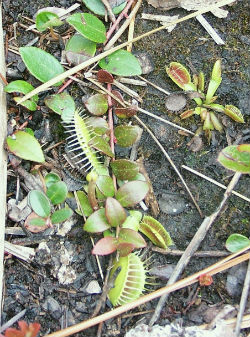
Clusters of Venus flytraps like the ones here can be found throughout the Green Swamp Preserve in Brunswick County. These are among 14 species of carnivorous plants that grow in the more than 17,000-acre preserve. |
Babin stood in the center of a small mound encircled by a shallow trench.
“I’m standing on a tar pit,” she said. “These are everywhere.”
The pits were created during the latter part of the 19th century, when the naval stores industry used pine to make turpentine. “Turpentiners” would also tap trees to extract sap. Some of the towering pines on the preserve still bear tapping scars.
Valerie Nieman wasn’t sure what she would see when she signed up for the hike.
“I really wanted to get in here,” she said. “I didn’t know how remote it was. It’s just very interesting.”
The Greensboro resident regularly visits her father, who lives in Southport – a quick 25-minute or so drive to the preserve. She said she plans to return to explore the nature trail again.
“I don’t want to go back,” she said as the group turned to head toward their cars. “It’s incredible here.”
The nature trail is about a three-mile hike round-trip. The trail may be accessed at a small parking lot about 5½ miles up N.C. 211 off of U.S. 17 north of Supply. It is open to the public throughout the year from dawn until dusk.
Visitors can also enjoy the 52-mile Green Swamp Scenic Byway, which loops through the property primarily along N.C. 211.
A portion of the preserve is open to hunting through the N.C. Wildlife Resources Commission’s Game Land program.
The conservancy is hosting its third annual carnivorous plant hike, called Walk with the Meat Eaters, at the preserve May 18. To reserve a spot, call Babin at 910-395-5000.
Related Stuff
- Bringing back red-cockaded woodpeckers
- Burning the forest to protect Venus flytraps
- History of “turpentiners” in North Carolina
- Plants of the longleaf pine savannas
- Why pocosins are amazing

